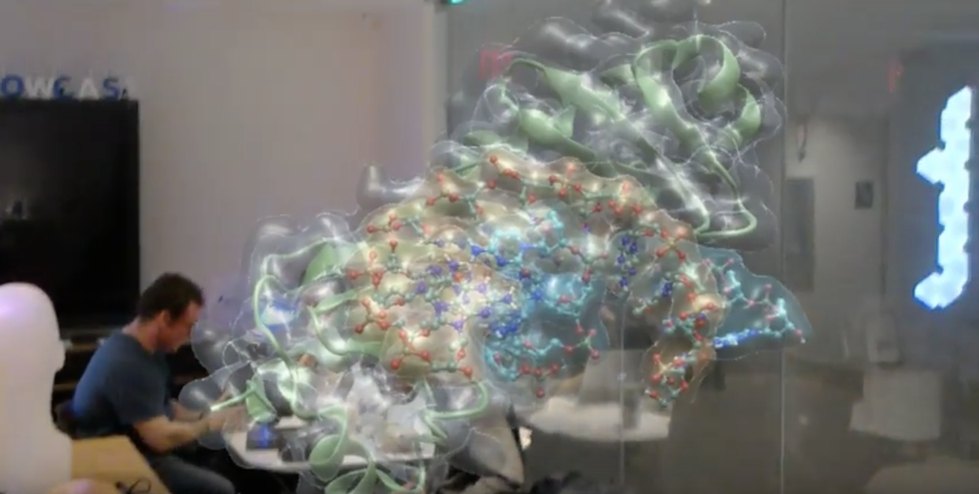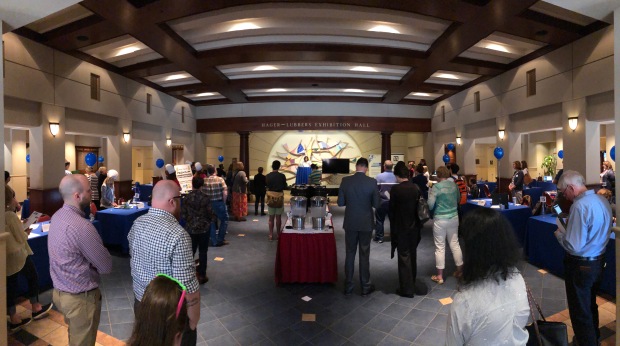 Recently, the EDUCAUSE Learning Initiative released the 2019 “Key Issues in Teaching and Learning“.
Recently, the EDUCAUSE Learning Initiative released the 2019 “Key Issues in Teaching and Learning“.
Each year, ELI surveys the higher education community to determine key issues and opportunities in postsecondary teaching and learning. These key issues serve as the framework, or focal points, for our discussions and programming throughout the coming year.
More than 1,400 community members voted, and the following were identified as the 2019 Key Issues.
This blog post captures the highlights from the ELI’s 2019 Key Issues with alignment and connection to the work of the eLearning and Emerging Technologies team at GVSU.
1 – Faculty Development & Engagement
 The eLearning and Emerging Technologies team at GVSU is on mission to engage with faculty and to “Support faculty pursuing innovation in teaching and learning…”
The eLearning and Emerging Technologies team at GVSU is on mission to engage with faculty and to “Support faculty pursuing innovation in teaching and learning…”
Innovation in teaching and learning happens when technology is creatively applied to craft active learning techniques that help students most efficiently achieve learning objectives.
The following facets of the eLearning team provide effective faculty development at GVSU:
- IDeL
Exemplary Instructional Design for Online and Hybrid Courses - Teaching with Technology
Effective Application of Instructional Technologies - Blackboard
Learning Management System Enhancement - Digital Studio
Interactive Digital Media Development - Technology Showcase
Innovative Emerging Technologies
From a professional development perspective, the eLearning team offers: consultations and coaching, on demand support, seminars and workshops, a teaching and technology podcast, tips for teaching with technology, faculty learning communities, video “TECHBytes”, and a “Teaching and Learning with Technology Symposium” that has been held for 18 years.
- GVSU eLearning Resource – eLearning and Emerging Technologies Support and Services
- GVSU eLearning Resource – Teaching and Learning with Technology Symposium
- GVSU eLearning Resource – Faculty Learning Communities
- GVSU eLearning Resource – Teaching with Technology
- GVSU eLearning Resource – Teaching and Techology Podcast
- GVSU eLearning Resource – TECHByte Videos
2 – Online & Blending Learning
 Distance education continues to grow at GVSU with a +25% increase in enrollment in online/hybrid classes since 2017. With over 5,000 student enrollments in the Fall 2018 semester, just over 17% of all students are taking at least 1 online or hybrid course.
Distance education continues to grow at GVSU with a +25% increase in enrollment in online/hybrid classes since 2017. With over 5,000 student enrollments in the Fall 2018 semester, just over 17% of all students are taking at least 1 online or hybrid course.
To support distance education initiatives, eLearning and Emerging Technologies has trained over 250 faculty to teach online/hybrid classes in the past year through the Foundations of Online and Hybrid Course Development and Delivery course.
As one of the most desired professional development opportunities, the “Foundations of Online and Hybrid Course Development and Delivery” workshop is a required training for all faculty that teach an online or a hybrid class at GVSU. As part of this professional development, Blackboard competencies are also required.
As faculty begin to engage with online and blended learning, and construct courses to serve remote learners, the skills and techniques learned also provide extensive benefits to on-campus students as well.
- GVSU eLearning Resource – Instructional Design for eLearning
3 – Instructional & Learning Experience Design
 Through the IDeL group of instructional designers, the eLearning team facilitates faculty learning communities on the topic of online teaching and learning, enhancing the skills of faculty. The instructional designers have also established TIP (theory into practice) sheets, offering guidance to faculty in the use of student feedback to help shape and improve teaching.
Through the IDeL group of instructional designers, the eLearning team facilitates faculty learning communities on the topic of online teaching and learning, enhancing the skills of faculty. The instructional designers have also established TIP (theory into practice) sheets, offering guidance to faculty in the use of student feedback to help shape and improve teaching.
The eLearning team also hosts regular weekly open office hours to connect directly with faculty, enabling opportunities to focus on learning experience design by leveraging technology.
Finally, each year, the eLearning team organizes the Teaching and Learning with Technology Symposium to provide a venue to showcase unique innovative pedagogical approaches based on peer experience in delivering high quality courses.
- GVSU eLearning Resource – Instructional Design for eLearning
4 – Digital & Information Literacy
 GVSU has established opportunities for students to build literacy and fluency as it relates to the use of everything digital. The eLearning team supports equipping the digital literacy of students and the campus community by offering a variety of enterprise applications and services.
GVSU has established opportunities for students to build literacy and fluency as it relates to the use of everything digital. The eLearning team supports equipping the digital literacy of students and the campus community by offering a variety of enterprise applications and services.
The eLearning Digital Studio maintains a vast project list that provides great breadth and depth of leveraging to technology that contributes to dialogue around 21st century literacy skills for students.
Virtual reality, augmented reality, 3D printing, and a wide array of other emerging technologies are provided to students through the Atomic Object Technology Showcase.
Further, the eLearning team is looking into the future by working collaboratively to establish more support for student-based digital media creation at GVSU through a potential “Digital Media Center“.
- GVSU eLearning Resource – Digital Studio
- GVSU eLearning Resource – Technology Showcase
5 – Accessibility and Universal Design for Learning (UDL)
 Diversity, equity, and inclusion is “built-in to the DNA” at GVSU through the university’s vision: “GVSU demonstrates its commitment to providing an inclusive learning environment where all students can explore new directions, find their niches, and develop skills for life and productive careers.”
Diversity, equity, and inclusion is “built-in to the DNA” at GVSU through the university’s vision: “GVSU demonstrates its commitment to providing an inclusive learning environment where all students can explore new directions, find their niches, and develop skills for life and productive careers.”
The eLearning team focuses on supporting inclusive education through accessibility and UDL by equipping faculty. Blackboard Ally was adopted and put into production at GVSU in the summer of 2018 to: generate awareness, build capacity, and increase institutional oversight of accessibility.
In addition, Panopto was implemented to provide video caption capability for faculty who are using instructional video content in their teaching. Both Ally and Panopto support the principles of inclusive education through accessibility and UDL.
- GVSU eLearning Resource – Blackboard Ally
- GVSU eLearning Resource – Panopto
- GVSU eLearning Resource – Universal Design for Learning
- GVSU eLearning Resource – Accessibility Tips for Online Course Content
6 – Competency and New Methods of Assessment
 eLearning facilitated the implementation of open badges for faculty professional development in partnership with the Faculty Teaching and Learning Center and University Libraries at GVSU. In fact, the first badge awarded at GVSU was eLearning and Emerging Technologies’s “#EdTech Summer Teaching Institute” badge. Further, 7 badges are currently offered by eLearning, including 4 Blackboard badges, a digital media badge, and a badge for the successful completion of Foundations of Online and Hybrid Course Development and Delivery.
eLearning facilitated the implementation of open badges for faculty professional development in partnership with the Faculty Teaching and Learning Center and University Libraries at GVSU. In fact, the first badge awarded at GVSU was eLearning and Emerging Technologies’s “#EdTech Summer Teaching Institute” badge. Further, 7 badges are currently offered by eLearning, including 4 Blackboard badges, a digital media badge, and a badge for the successful completion of Foundations of Online and Hybrid Course Development and Delivery.
GVSU also offers a variety of credit and non-credit student badges such as mobile computing, data analytics, and cybersecurity.
- GVSU eLearning Resource – eLearning and Emerging Technologies Faculty Badges
7 – Learning Analytics
 Taking advantage of “big” data and “small” data through analytics offers many opportunities.
Taking advantage of “big” data and “small” data through analytics offers many opportunities.
BIG data, meaning the large scale and mass amounts of data that can inform strategic decisions. Also, SMALL data in the use of course level information about students and their levels of engagement in their courses. Solutions that include early alert, intervention, and that provide student insights empower faculty and advisors with unique capabilities in the support of early alert to improve student retention.
Applications such as Starfish Retention Solutions and Blackboard Predict provide capabilities to inform faculty and advisors with students at-risk through early alert, and also at the individual instructor level through in course tools such as the Blackboard Retention Center.
Notable also is “Clicks, Grades, Engagement, and Student Success” whereby, Blackboard has provided research in how successful students are using learning management system tools based on learning analytics.
“The most successful students are those who access MyGrades most frequently; students doing poorly do not access their grades. Students who never access their grades are more likely to fail than students who access them at least once.”
- GVSU eLearning Resource – Blackboard Retention Center
8 – Open Education
 GVSU has been involved in the open education resources (OER) movement for many years, and most recently has seen a growth in the adoption and use of #OER in teaching and learning. For example, there have been several adoptions of OpenStax textbooks in Chemistry and Mathematics and a new interdisciplinary team lead by the university’s library is helping to coordinate resources and raise awareness.
GVSU has been involved in the open education resources (OER) movement for many years, and most recently has seen a growth in the adoption and use of #OER in teaching and learning. For example, there have been several adoptions of OpenStax textbooks in Chemistry and Mathematics and a new interdisciplinary team lead by the university’s library is helping to coordinate resources and raise awareness.
In fact, GVSU has been participating with the K-12 community through the #GOOPEN initiative as part of the US Department of Education’s goal to encourage states, school districts and educators to use openly licensed educational materials to transform teaching and learning. GVSU joined the K-12 #GOOPEN initiative in January last year.
Further, there has been activity across the state for several years, and one recent example is the #MIOERSummit, which brought together faculty across the state with the goal of improving student success through the use and adoption of OER. At GVSU, students have saved over $480,000 in textbook costs, with 3000+ course sections each semester that require no paper textbook.
- GVSU eLearning Resource – Open Educational Resources (OER)
9 – Evaluating Instructional & Learning Innovations

Gathering data to inform decision making enables measurement and supports continuous quality improvement.
The eLearning team has used surveys to gather improvement recommendations for the Foundations of Online and Hybrid Course Design and Development course, Blackboard, and also the EDUCAUSE Center for Applied Research survey of faculty and students and their attitudes and use of technology in education.
- eLearning Resource – Blackboard Survey of Faculty and Students 2017, 2016
- eLearning Resource – ECAR Study of Faculty and Students Technology Use 2015
10 – Academic Transformation

The eLearning team aligns with GVSU’s 2021 Strategic Plan in the following areas that support academic transformation and innovative faculty development and strategic academic transformation:
Institutional outcome D: Grand Valley supports innovative teaching, learning, integrative scholarly and creative activity, and the use of new technologies.
Objective 1.D.2: At least 93% of faculty members regularly use electronic course management tools, such as Blackboard, in their teaching.
Objective 3.D.2: At least 30% of undergraduate courses are offered in innovative approaches and formats, such as hybrid, online and competency-oriented.
Objective 3.D.3: At least 30% of graduate courses are offered in innovative approaches and such as hybrid, online and competency-oriented.
Objective 4.D.1: Effective technologies are integrated into every function and structure across the institution.
As part of the eLearning team’s work toward academic transformation, the latest emerging technologies are a focus of the Atomic Object Technology Showcase. The mission of the showcase is to provide faculty, staff, and students with an immersive and engaging environment to: interact, discover, learn, and share how innovative emerging technologies can enhance teaching and improve student learning at GVSU. With over 40 emerging technology exhibits that include virtual reality, augmented reality, and 3D printing and makerspace, the showcase is an outstanding and very unique example of education, technology, and innovation.
- GVSU eLearning Resource – Technology Showcase as Engaging Space with Emerging Technologies
See also: “EDUCAUSE Learning Initiative ‘2018 Key Issues’ Meet the Initiatives in eLearning at GVSU”































